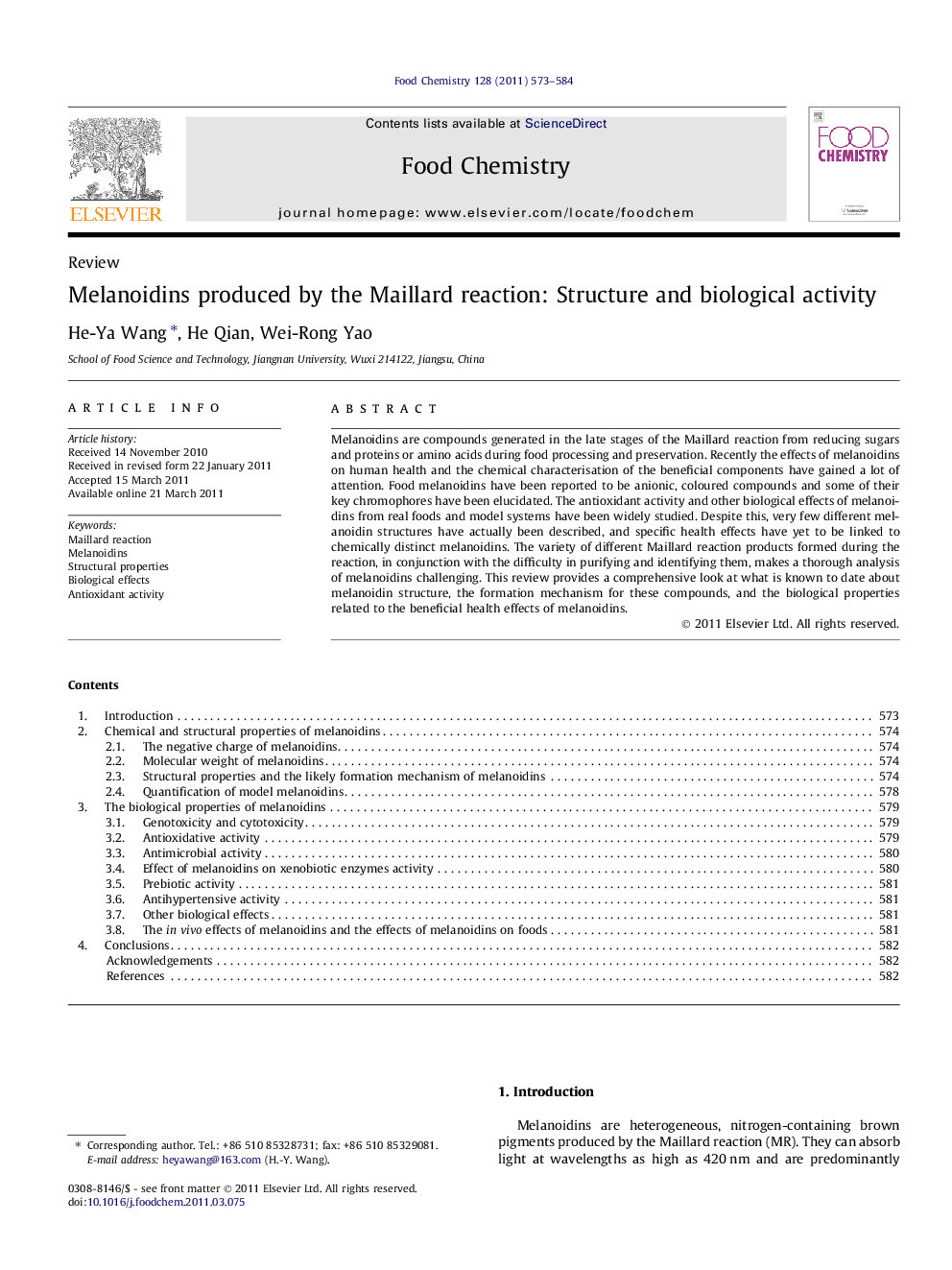| Article ID | Journal | Published Year | Pages | File Type |
|---|---|---|---|---|
| 1187013 | Food Chemistry | 2011 | 12 Pages |
Melanoidins are compounds generated in the late stages of the Maillard reaction from reducing sugars and proteins or amino acids during food processing and preservation. Recently the effects of melanoidins on human health and the chemical characterisation of the beneficial components have gained a lot of attention. Food melanoidins have been reported to be anionic, coloured compounds and some of their key chromophores have been elucidated. The antioxidant activity and other biological effects of melanoidins from real foods and model systems have been widely studied. Despite this, very few different melanoidin structures have actually been described, and specific health effects have yet to be linked to chemically distinct melanoidins. The variety of different Maillard reaction products formed during the reaction, in conjunction with the difficulty in purifying and identifying them, makes a thorough analysis of melanoidins challenging. This review provides a comprehensive look at what is known to date about melanoidin structure, the formation mechanism for these compounds, and the biological properties related to the beneficial health effects of melanoidins.
► Food melanoidins are generally anionic coloured compounds. ► Melanoidins are LMW pigments or HMW compounds with LMW chromophore. ► Melanoidins have several potential health-promoting effects. ► Structure–health effects relationship of melanoidins has not been fully elucidated.
